-
认识单链表
-之前我们学过储存数据的一种表——顺序表,那么为什么还有链表呢
首先我们回顾一下顺序表
顺序表是物理地址连续的一段内存空间(数组),我们通过动态内存开辟的,
那么: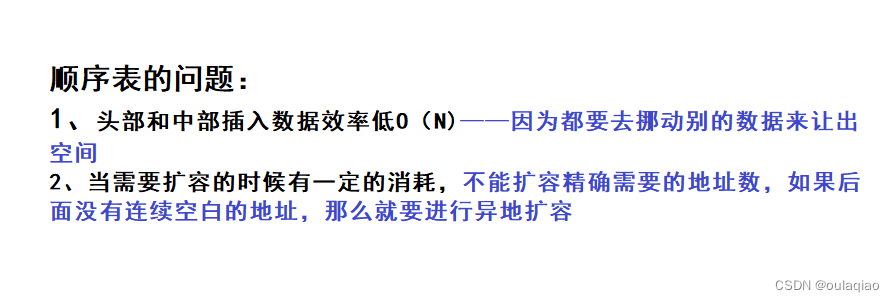
顺序表也有自己的一些优点,比如我们之前做过的一些题,可以通过下标来快速完成,因为他的地址是连续的所以只要利用下标的加减就可以实现既然顺序表有缺点,那么我们就有了链表。(按需求申请空间)
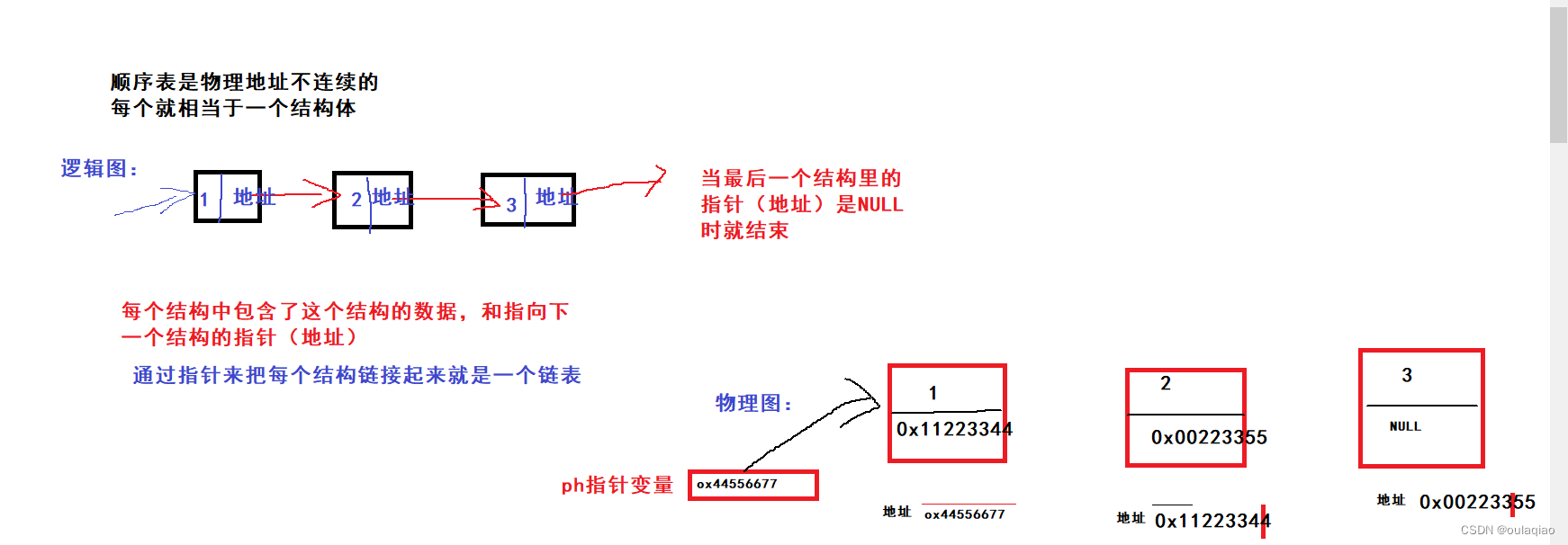

通过插入数据,来理解链表
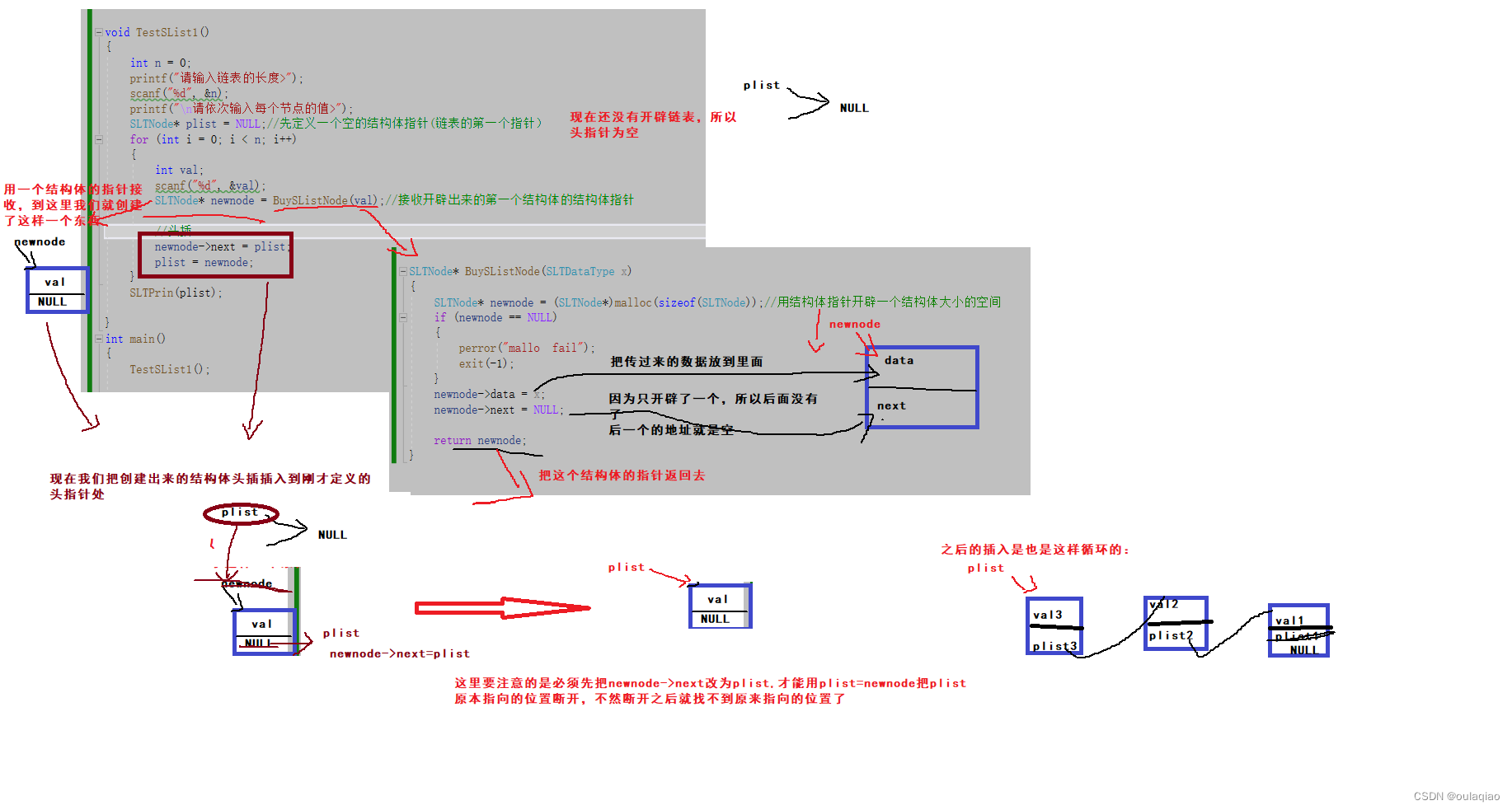
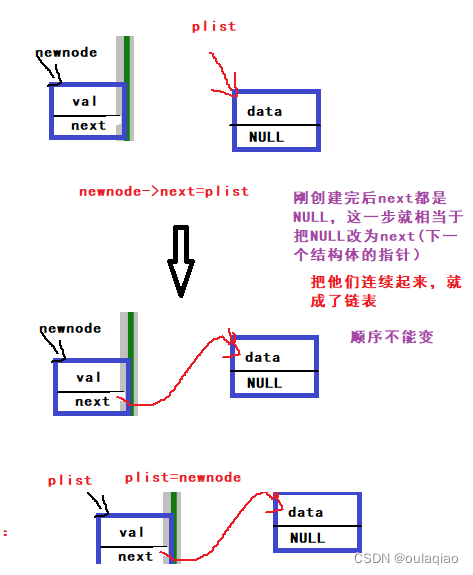
打印函数
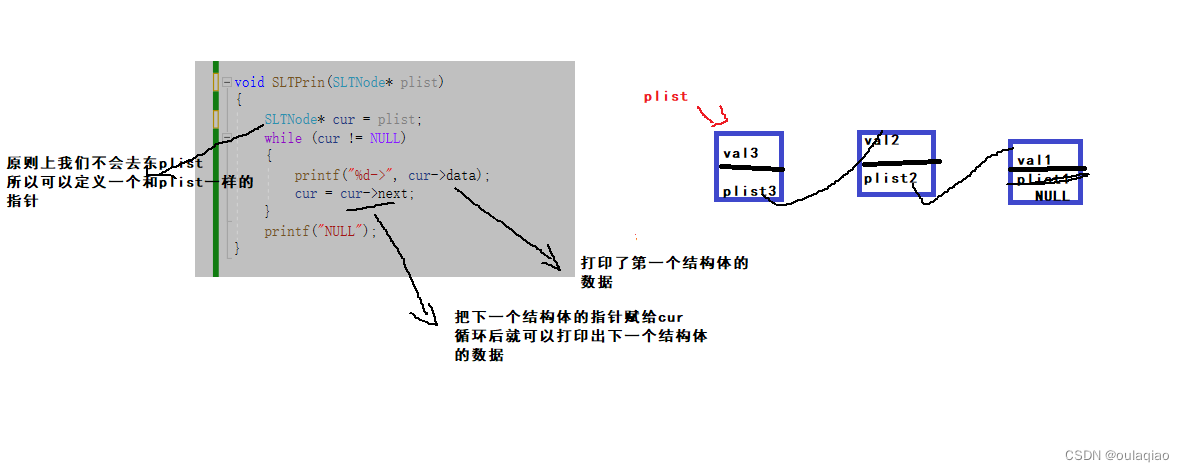
在链表的尾部插入数据

代码:
SLTPushBack(SLTNode* plist, SLTDataType x) { //首先要开辟一个结构体来把要插入的数据的内容写进去,在之前的BuySListNode函数就是干这个事情的 SLTNode* newnode = BuySListNode(x); SLTNode* tail = plist; while (tail->next != NULL) { tail = tail->next; } tail->next = newnode; }- 1
- 2
- 3
- 4
- 5
- 6
- 7
- 8
- 9
- 10
- 11
- 12
- 13
- 14
上述的尾插是建立在之前已经头插了几个节点的情况下的

那么当链表还是空的时候,这样的尾插还适用吗
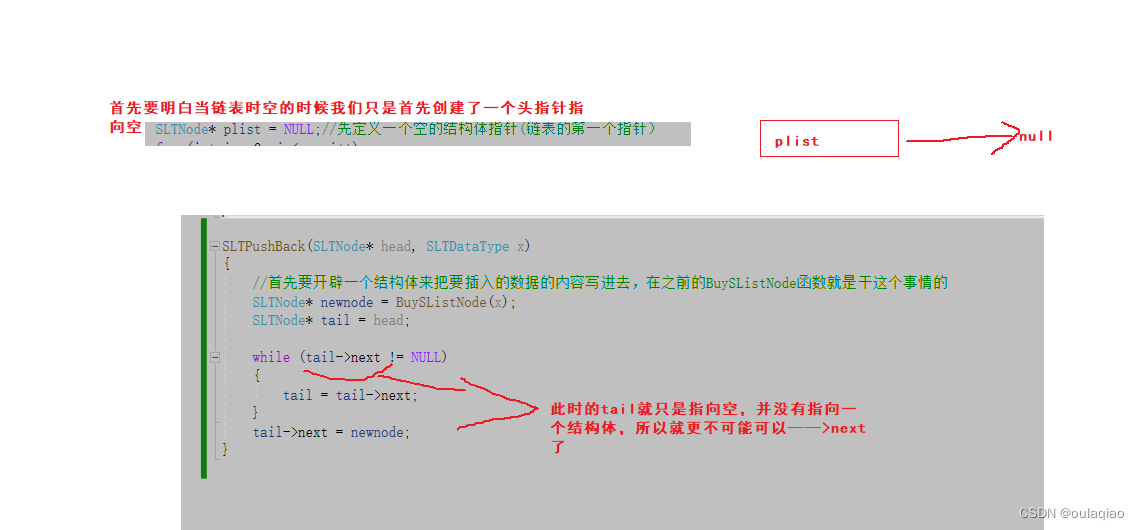
知道了这个问题我们来修改代码:

那么想要修改plist就要传址,
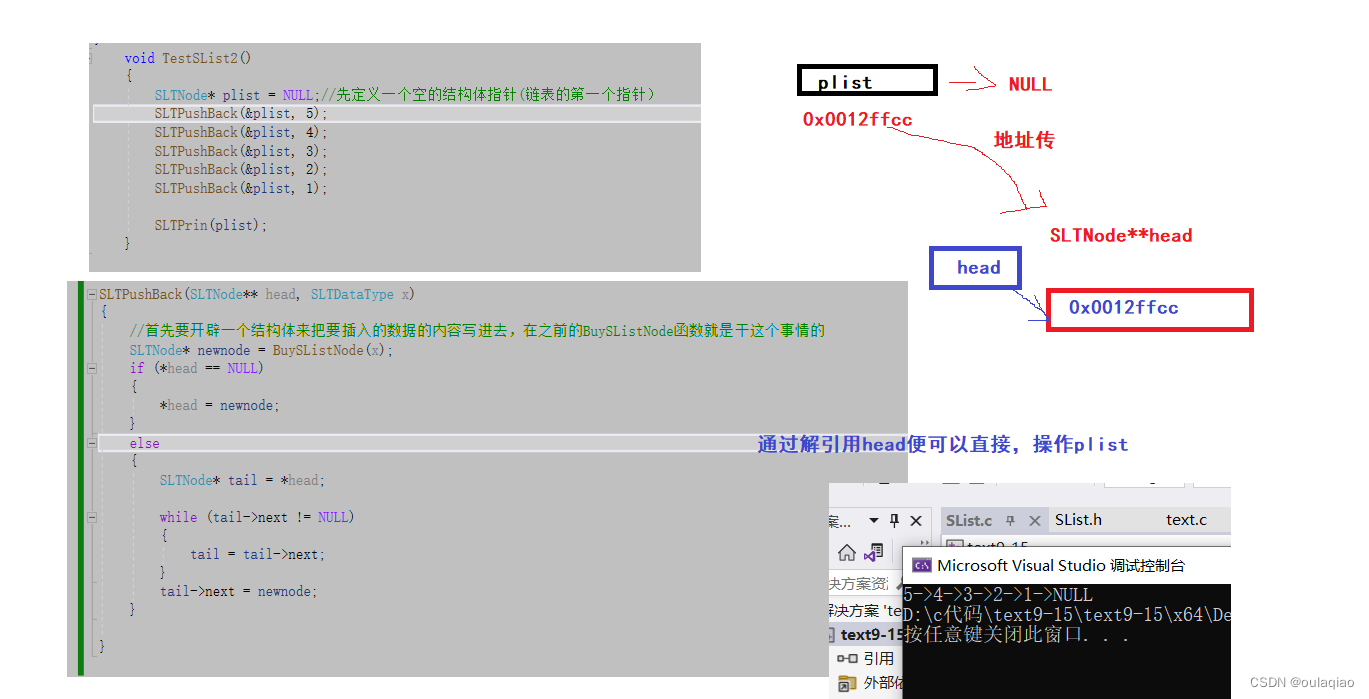
尾插总结图

头插:头插不管什么情况都要挪动plist的,所以也是传址操作,上面已经写到过头插的指针变换了,这里我们直接写代码就行void TestSList3() { SLTNode* plist = NULL; SLTPushFront(&plist,5); SLTPushFront(&plist, 4); SLTPushFront(&plist, 3); SLTPushFront(&plist, 2); SLTPrin(plist); } void SLTPushFront(SLTNode** head, SLTDataType x) { SLTNode* newnode = BuySListNode(x); newnode->next = *head; *head = newnode; }- 1
- 2
- 3
- 4
- 5
- 6
- 7
- 8
- 9
- 10
- 11
- 12
- 13
- 14
- 15
- 16
- 17
- 18
- 19
- 20
- 21
- 22

尾删
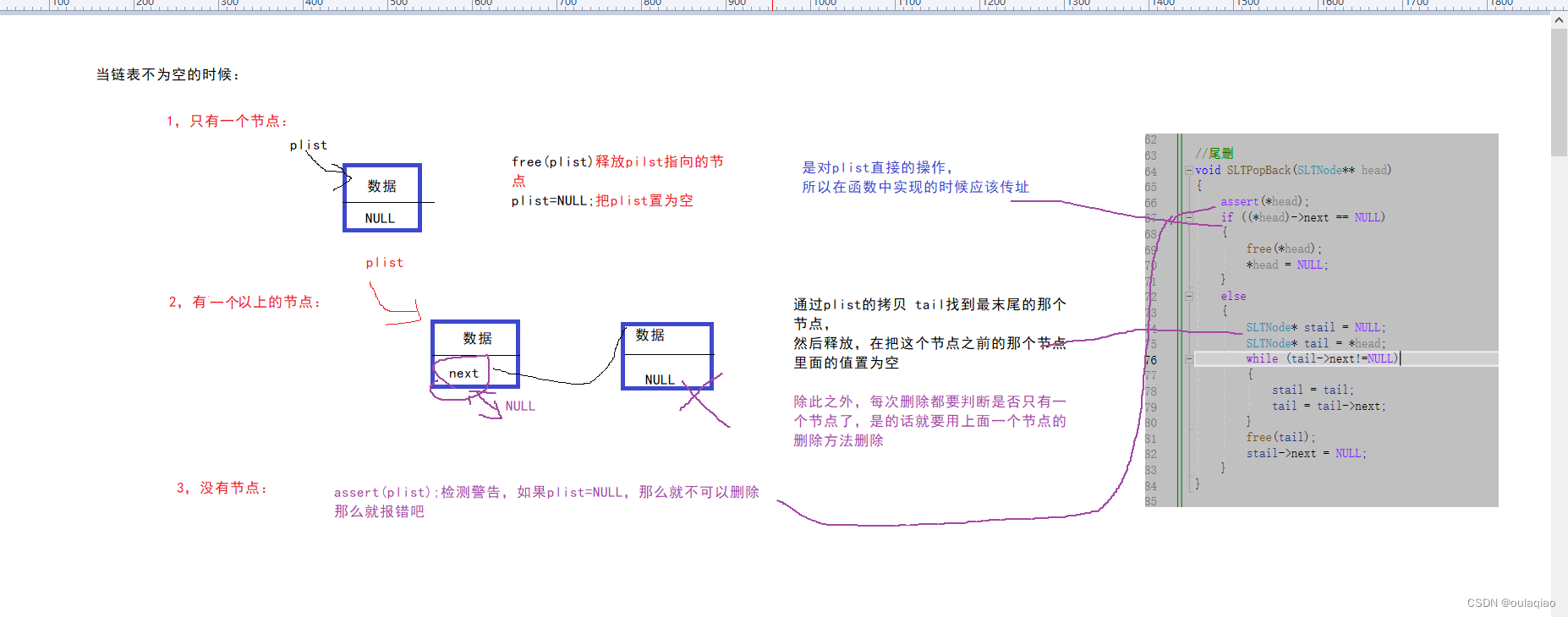
代码://尾删 SLTPopBack(&plist); SLTPrin(plist); SLTPopBack(&plist); SLTPrin(plist); SLTPopBack(&plist); SLTPrin(plist); SLTPopBack(&plist); SLTPrin(plist); SLTPopBack(&plist); SLTPrin(plist);- 1
- 2
- 3
- 4
- 5
- 6
- 7
- 8
- 9
- 10
- 11
- 12
- 13
- 14
- 15
- 16
- 17
- 18
void SLTPopBack(SLTNode** head) { assert(*head); if ((*head)->next == NULL) { free(*head); *head = NULL; } else { SLTNode* stail = NULL; SLTNode* tail = *head; while (tail->next!=NULL) { stail = tail; tail = tail->next; } free(tail); stail->next = NULL; } }- 1
- 2
- 3
- 4
- 5
- 6
- 7
- 8
- 9
- 10
- 11
- 12
- 13
- 14
- 15
- 16
- 17
- 18
- 19
- 20
- 21
- 22
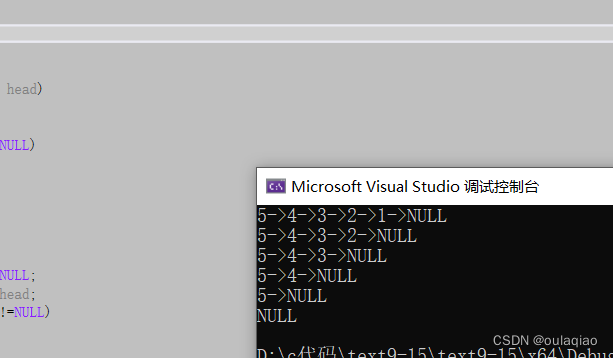
头删

代码:
SLTPopFront(&plist); SLTPrin(plist); SLTPopFront(&plist); SLTPrin(plist); SLTPopFront(&plist); SLTPrin(plist); SLTPopFront(&plist); SLTPrin(plist); void SLTPopFront(SLTNode** head) { assert(*head); SLTNode* newnode = (*head)->next; free(*head); *head = newnode; }- 1
- 2
- 3
- 4
- 5
- 6
- 7
- 8
- 9
- 10
- 11
- 12
- 13
- 14
- 15
- 16
- 17
- 18
- 19
- 20
- 21
- 22
- 23
- 24
- 25
- 26
- 27
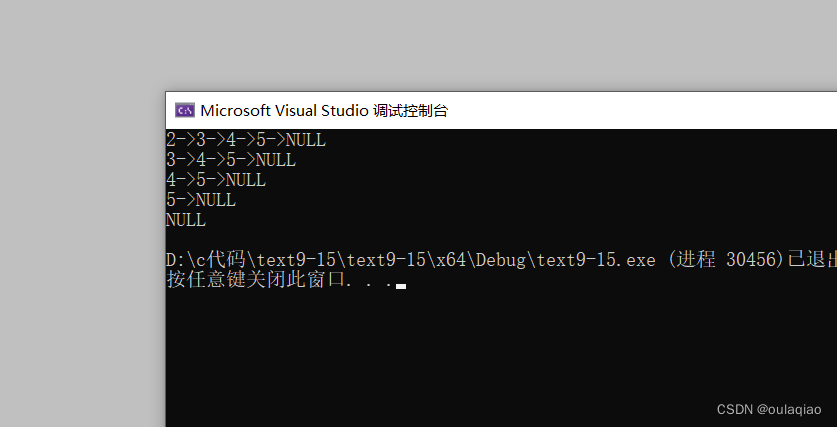
查找链表中的数的指针,并改变这个指针所指节点的数据
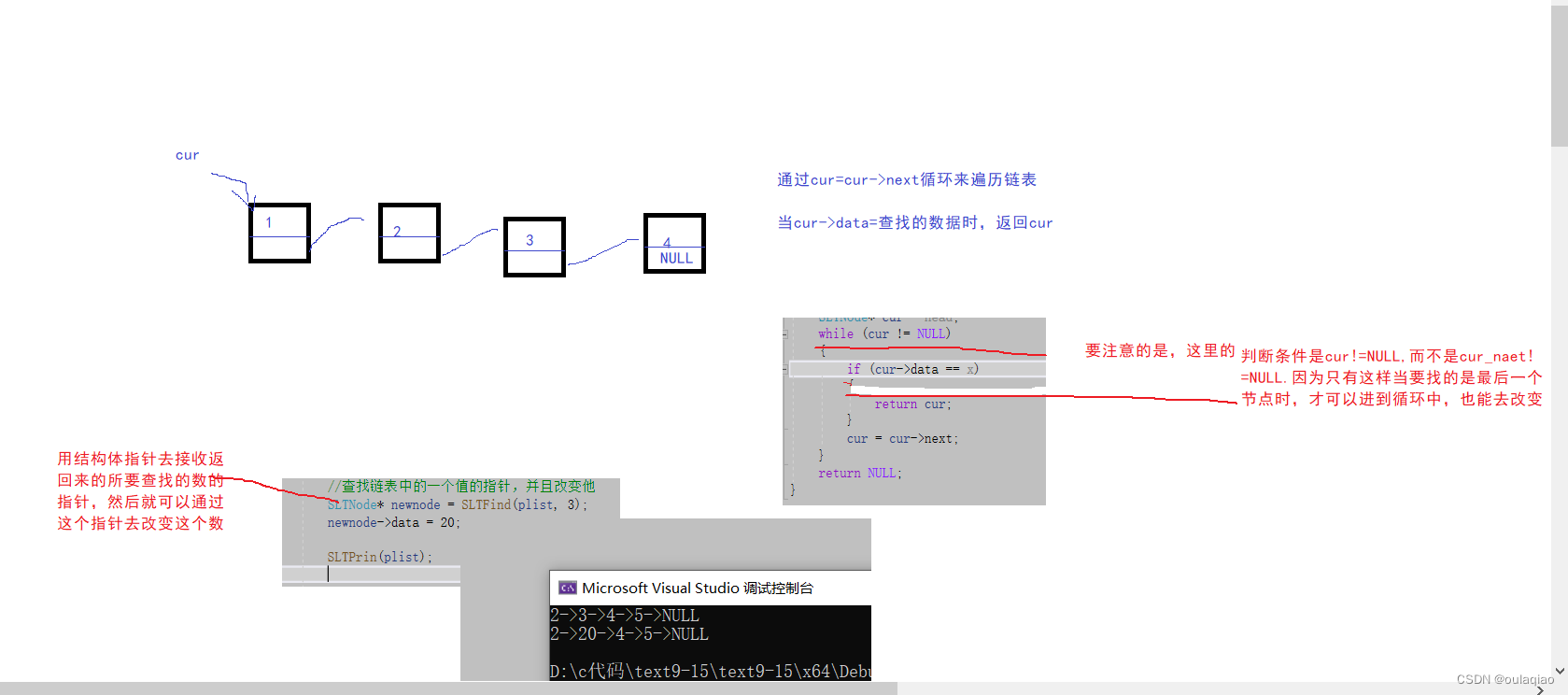
代码://查找链表中的一个值的指针,并且改变他 SLTNode* newnode = SLTFind(plist, 3); newnode->data = 20; SLTPrin(plist); SLTNode* SLTFind(SLTNode* head, SLTDataType x) { SLTNode* cur = head; while (cur != NULL) { if (cur->data == x) { return cur; } cur = cur->next; } return NULL; }- 1
- 2
- 3
- 4
- 5
- 6
- 7
- 8
- 9
- 10
- 11
- 12
- 13
- 14
- 15
- 16
- 17
- 18
- 19
- 20
在Pos位置插入节点
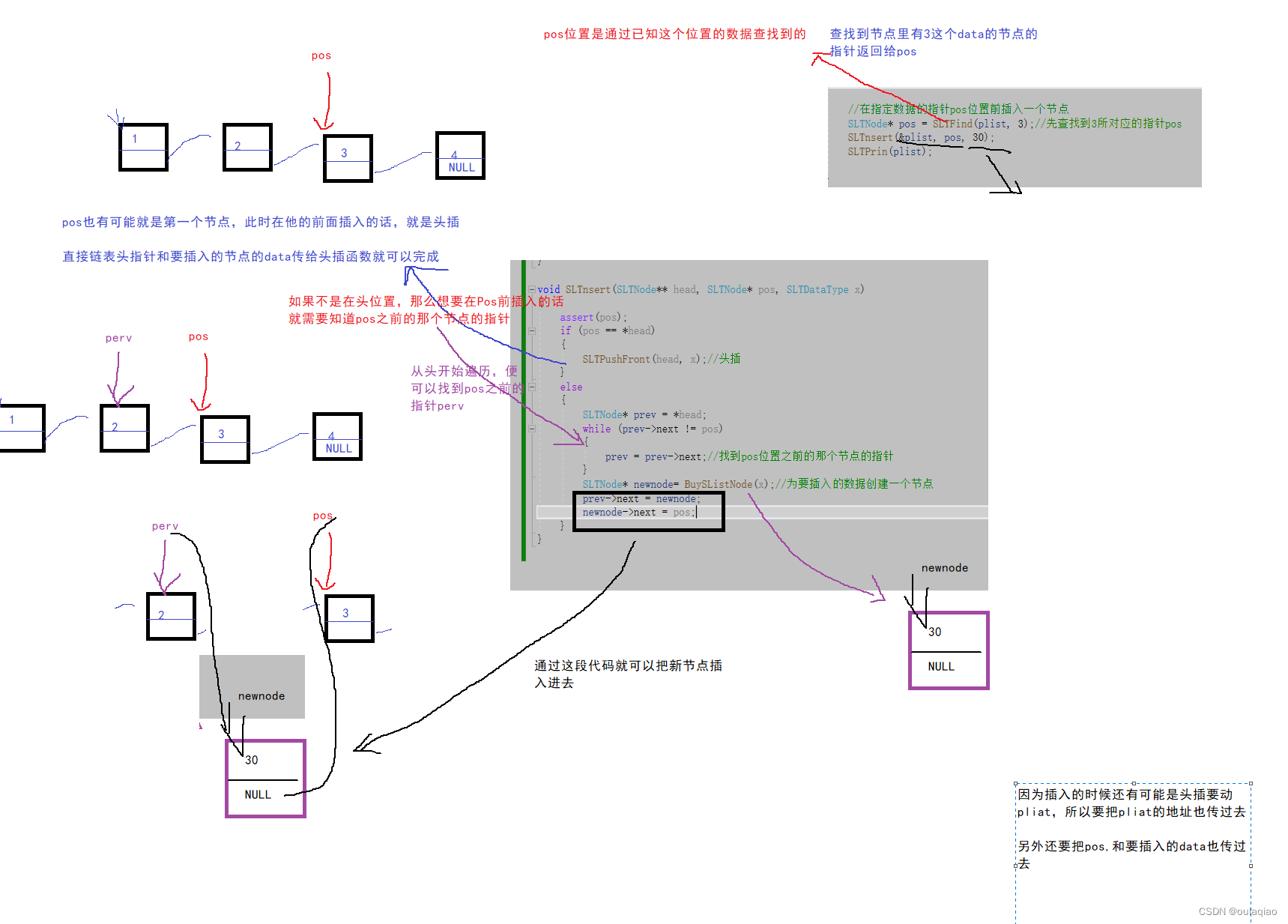
代码://在指定数据的指针pos位置前插入一个节点 SLTNode* pos = SLTFind(plist, 3);//先查找到3所对应的指针pos SLTnsert(&plist, pos, 30); SLTPrin(plist); void SLTnsert(SLTNode** head, SLTNode* pos, SLTDataType x) { assert(pos); if (pos == *head) { SLTPushFront(head, x);//头插 } else { SLTNode* prev = *head; while (prev->next != pos) { prev = prev->next;//找到pos位置之前的那个节点的指针 } SLTNode* newnode= BuySListNode(x);//为要插入的数据创建一个节点 prev->next = newnode; newnode->next = pos; } }- 1
- 2
- 3
- 4
- 5
- 6
- 7
- 8
- 9
- 10
- 11
- 12
- 13
- 14
- 15
- 16
- 17
- 18
- 19
- 20
- 21
- 22
- 23
- 24
- 25
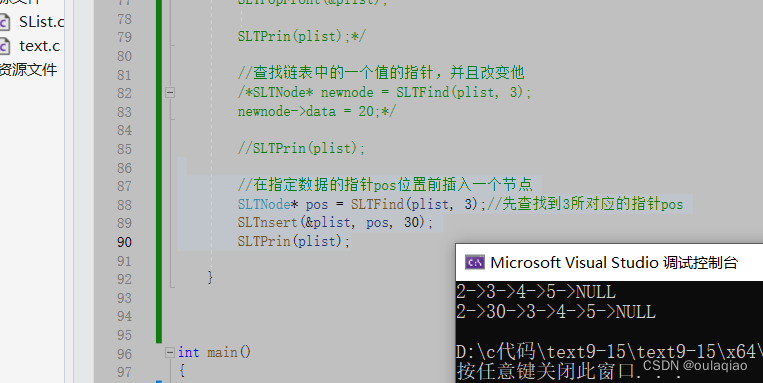
在pos位置之后插入节点

代码:SLTNode* pos = SLTFind(plist, 3);//先查找到3所对应的指针pos /* SLTnsert(&plist, pos, 30); SLTPrin(plist);*/ SLTnsertAfter(plist, pos, 30); SLTPrin(plist); void SLTnsertAfter(SLTNode* head, SLTNode* pos, SLTDataType x) { assert(head); SLTNode* newnode = BuySListNode(x);//为要插入的数据创建一个节点 newnode->next = pos->next; pos->next = newnode; }- 1
- 2
- 3
- 4
- 5
- 6
- 7
- 8
- 9
- 10
- 11
- 12
- 13
- 14
- 15
- 16
删除Pos位置的节点
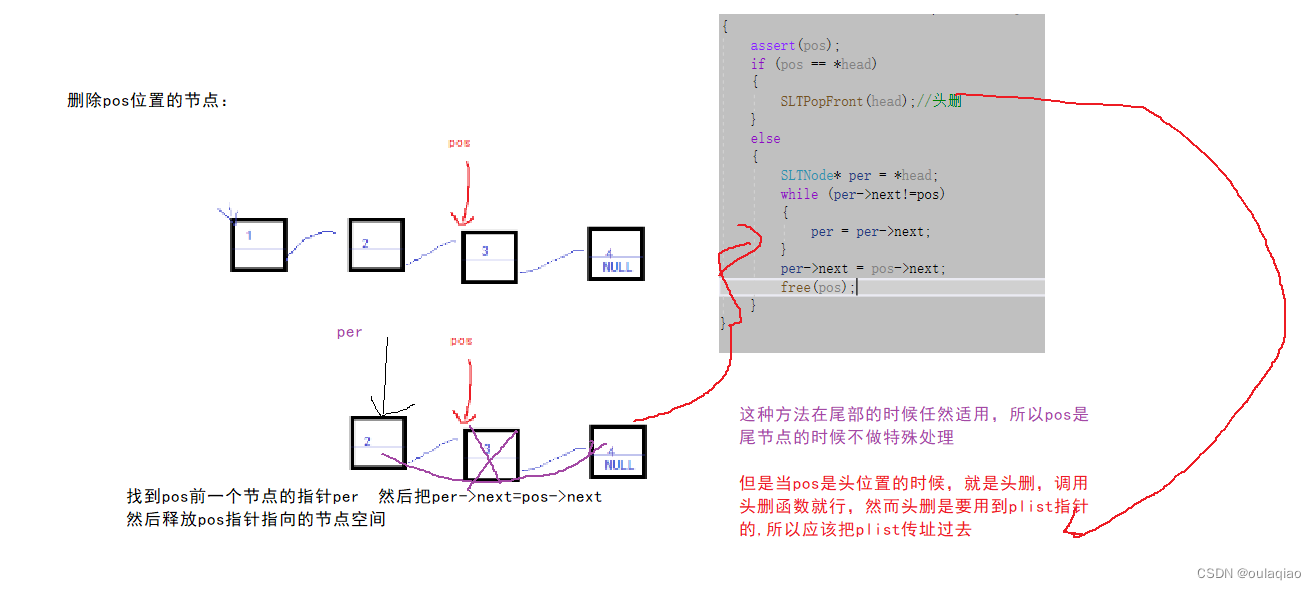
SLTErase(&plist, pos); pos = NULL; SLTPrin(plist); void SLTErase(SLTNode** head, SLTNode* pos) { assert(pos); if (pos == *head) { SLTPopFront(head);//头删 } else { SLTNode* per = *head; while (per->next!=pos) { per = per->next; } per->next = pos->next; free(pos); } }- 1
- 2
- 3
- 4
- 5
- 6
- 7
- 8
- 9
- 10
- 11
- 12
- 13
- 14
- 15
- 16
- 17
- 18
- 19
- 20
- 21
- 22
- 23
- 24
删除pos位置之后的节点

代码:SLTNode* pos = SLTFind(plist, 3);//先查找到3所对应的指针pos SLTEraseAfter(pos); SLTPrin(plist); void SLTEraseAfter(SLTNode* pos) { assert(pos->next); assert(pos); SLTNode* per = pos->next; pos->next = per->next; free(per); }- 1
- 2
- 3
- 4
- 5
- 6
- 7
- 8
- 9
- 10
- 11
- 12
- 13
- 14
- 15
- 16
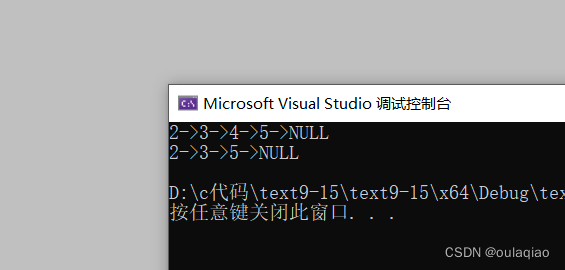 释放链表
释放链表

-
相关阅读:
github搜索技巧探索
CSS 零基础到实战(05)布局、盒子模型、弹性盒子【前端就业课 第二阶段】
JAVA中PRIORITYQUEUE详解
ECharts(1)
西门子V20变频器调试基本步骤示例
数据结构第一课-----------数据结构的介绍
Android 12 “Bug 连连”:除了一加、三星,谷歌自家手机都被“坑”了
达梦数据库,外部基表不能存在任何约束条件
PHY强制模式下的协商能力
Vue2、Vue3知识总结---完整版✨
- 原文地址:https://blog.csdn.net/qq2127189274/article/details/132887778
